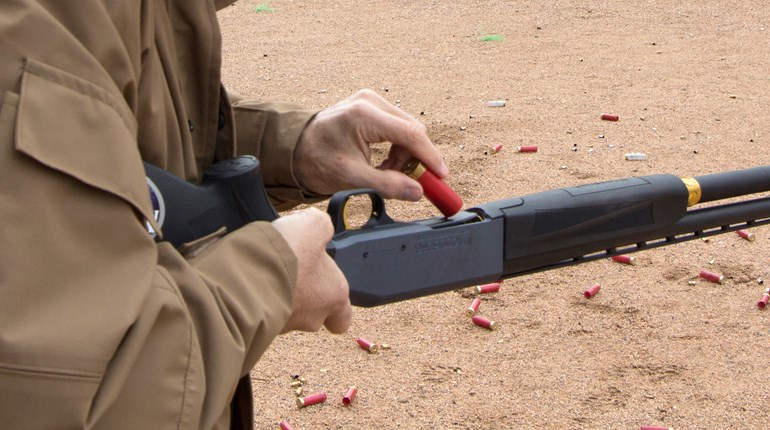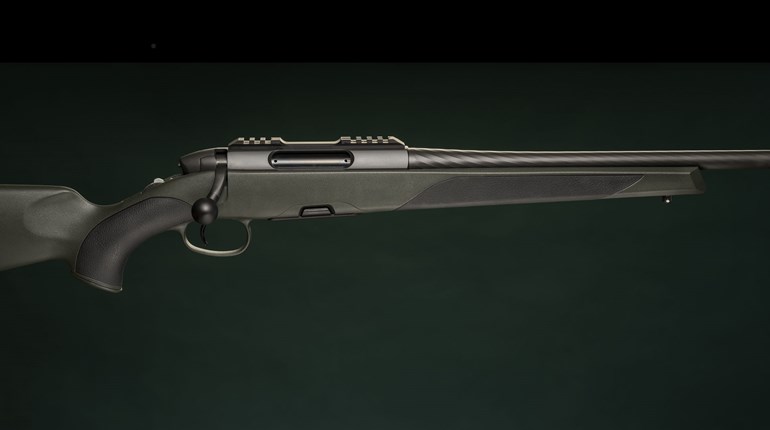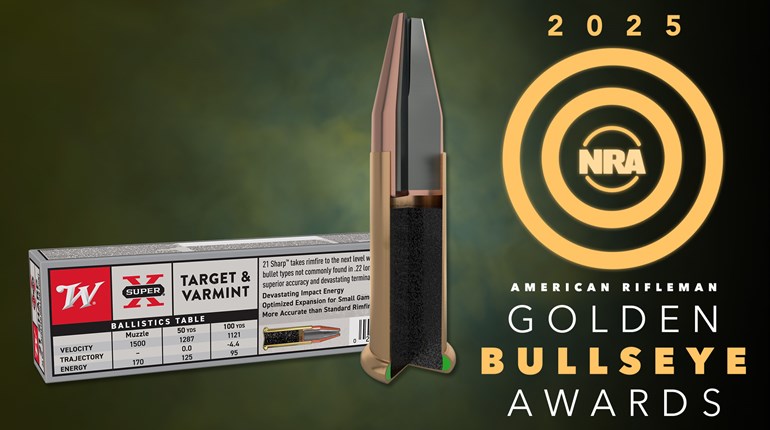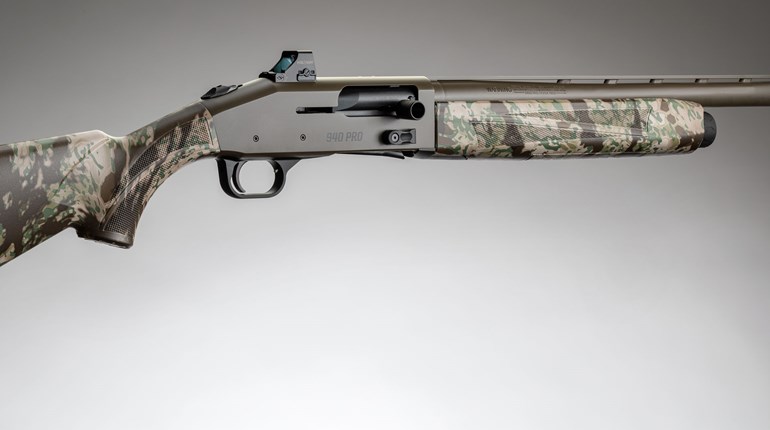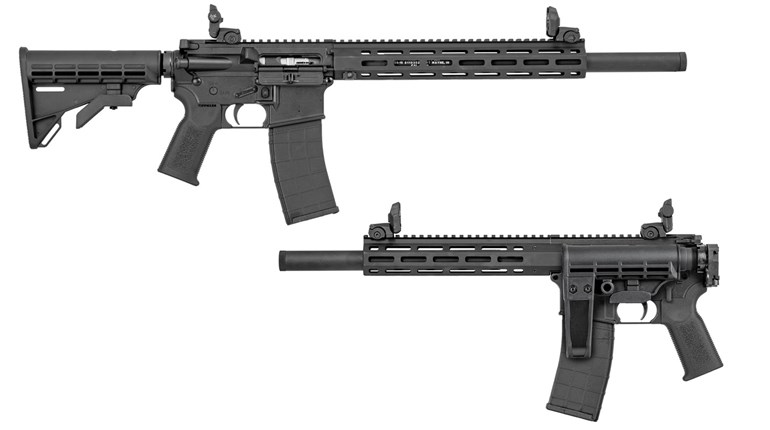
There are several conditions of readiness in which to keep your home-defense shotgun in preparation for an emergency. Here’s a rundown of the most common ones, followed by some pros, cons and opinions.
Condition Zero
A few people, though not many, advocate keeping a dedicated home-defense shotgun in Condition Zero: Full magazine, loaded chamber, with the safety off. This may be the fastest method, but it’s also the least safe. While people often carry their handguns in this state (as do I), there’s a big difference between carrying a handgun and a shotgun: Most handguns (1911s being the obvious exception) are holstered when carried in Condition Zero, so the trigger is protected. But, a shotgun typically has no such holster and therefore nothing to keep an object, say a light switch, an excited dog’s paw or your finger as you reach for it in the dead of night, from inadvertently touching the trigger. Therefore, I am not an advocate of keeping an unprotected shotgun in Condition Zero.
Condition 1
I live by myself, and since my dog, who often lacks good judgement, also lacks opposable thumbs, I keep my home-defense shotgun fully loaded with a round in the chamber and the safety on. Called Condition 1, it maximizes the rounds it will hold (a full magazine, plus one in the chamber) while minimizing the time needed to put the shotgun to use. It’s also quiet. I don’t care to waste time and alert an attacker to my whereabouts by racking the slide when I could be stopping the threat posed.
While there’s some writing out there that suggests using your gun’s safety could cost you precious seconds through fumbling or forgetting it under pressure, I think that theory is bunk. It all depends on the amount of muscle memory you’ve ingrained with your shotgun, and if you don’t have it, you should practice until you do. Consider that quail hunters, who while walking through a field completely unexpecting a flush, can be startled by a rising quail, push the safety while shouldering the shotgun and shoot the bird in less than a second. They are not consciously thinking about pushing the safety. Rather, it has become automatic. While shooting a bird is no comparison to stopping a threat, I suspect that the muscle-memory aspect would carry over.
This preference could change if my situation does, but for now I prefer my shotgun fully loaded, leaning in a corner by my bed, safety on.
Condition 2
Condition 2 doesn’t often apply to shotguns since it means that the chamber and magazine are loaded, but the hammer is uncocked. In most modern, hammerless shotguns, the shotgun’s chamber cannot be loaded or unloaded without automatically cocking the hammer.
Condition 3, “Cruiser Safe”
Condition 3, also called “Cruiser Safe Condition” or sometimes simply “Cruiser-ready,” is an excellent mode for readiness. Utilized and therefore named by law enforcement for carrying the shotgun in a police car, it’s a condition of readiness wherein a pump shotgun is unloaded then the trigger pulled on an empty chamber so it is decocked. Then the magazine is fully loaded but the chamber is kept empty. Now, to load the chamber, all one must do is pump the action without having to locate and depress the action-release button. It’s safe and fast.
The only two downsides are that ultimately the shotgun will hold one less round than it could in total. Secondly, the sliding of the action can be loud. While some people think racking the action loudly on purpose could thwart home invaders by the mere sound of it, I disagree.
For this mode, the safety could be left in the “off” position because the gun is not cocked, nor is a round chambered, and thus it cannot be negligently discharged. While I still advocate using the safety even in cruiser mode—because if it’s ingrained it won’t waste any extra time in doing so and it builds good habits—there is no danger of a negligent discharge when not using it in the Cruiser-ready condition.
“Benelli Carry”
Another condition of carry that works only in some shotguns (like early-model, semi-automatic Benellis) that do not automatically eject a round from the magazine each time the bolt is racked, is one that I call “Benelli Carry.” (My new Remington Versa Max Tactical also allows it). Here’s how it works: Load the magazine fully, then open the action three-quarters of the way back and place a round under the bolt and onto the carrier. Now let the bolt slide fully home without carrying the shell into battery. Done right, the magazine will be fully loaded and one shell will float on the carrier. That way, the gun does not lose one round of capacity, but it is also is incapable of firing if the trigger is accidentally pulled because there is no shell in the chamber. Yet, because it requires the shooter to rack the slide once to send a round into battery, it could thwart small children who don’t have the strength to do so. The downside is that racking the bolt, like pumping the gun, takes a half-second and can be loud.
Condition 4
On the extreme-safe end of the spectrum is what’s commonly called Condition 4. It means chamber unloaded, magazine empty and action open. This is how I’d hand a shotgun to someone, but I don’t recommend it for home-defense readiness because loading the magazine (for anyone who’s not Jerry Miculek) can take up to 20 seconds, depending on how many rounds your shotty holds and your skill level. Twenty seconds would seem like watching “Dead Poets Society” several times in agonizing succession if you were actually in a defensive emergency. Of course, many home defenders have kids, and they feel they can’t risk having a loaded gun in the home. If this is the case, at least keep your shells in a predetermined, handy place so you’re not trying to find them at the moment of truth.
In sum, you must figure out what condition of shotgun readiness works best for you based on your experience, comfort level and situation. If unauthorized users are a matter for consideration, you might consider buying a fast-access vault or trigger lock rather than keeping the shotgun fully unloaded. A fast-access vault like the Hornady RapidSafe AR Gunlocker (shown above), a lock around the trigger guard like the ShotLock or even a simple cable lock may be quicker than loading the magazine and will provide a level of security against theft.
Whatever your situation, you must weigh the risk of danger in keeping a shotgun in various states of readiness versus its speed of loading and using it from that condition. Try these techniques, then, and pick the one that works best for you. Once you’ve decided which method is best, train and practice with it so there won’t be any surprises, missteps or mishaps when you need your home-defense shotgun the most.












